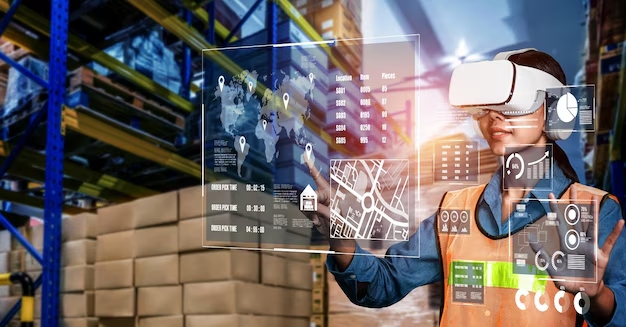The role of machine vision technologies in improving cargo condition monitoring


Let’s say you’re shipping a pallet of electronics halfway across Europe. Everything’s bubble-wrapped, labeled, humidity-controlled. You did everything right—on paper. But something went wrong. The cargo shows up dented, boxes torn.
The client sends angry photos, your ops team swears the truck was fine. And now you’re stuck in the “who’s to blame” loop, playing detective after the fact. Sound familiar? Yeah, we’ve all been there. That’s where machine vision comes in—not just another tech buzzword, but something that’s actually starting to change how we monitor cargo while it’s moving, not just after it arrives looking sad.
What even is machine vision—and why should you care?
In normal language: it’s when computers “see” things using cameras. Not just recording video, but recognizing what’s happening in the frame.
Like:
- Was this box dropped?
- Did someone open the seal mid-route?
- Is there a leak forming near pallet three?
- Is this guy loading cargo like it’s a game of Tetris gone wrong?
Before, you’d need a person watching footage. Now? The system flags it for you, in real time.
Real cargo problems, meet real-time eyes
Let’s say your warehouse uses forklifts. Great. But what if the forks go a little too deep and puncture the box? Happens all the time. Most people won’t say a word. They’ll patch it, maybe rotate it to hide the hole, and off it goes. Fast-forward to your angry client wondering why the smart TVs are scratched. With machine vision? The system literally sees the impact and flags it. Timestamped. Tagged. Logged. So you can act before it leaves the building.
Where it actually helps (and where it doesn’t)
Where machine vision shines:
- Loading docks. It watches for improper stacking, rough handling, or if someone skips scanning a barcode.
- Transit. Think of a small camera in the trailer or container, detecting shifts in cargo during sudden braking. Even motion patterns. (Yes, it’s that smart.)
- Storage. If a seal gets broken on a high-value shipment, you get pinged immediately.
Where it’s not a magic wand:
- It won’t stop people from making mistakes.
- It won’t fix your damaged packaging (though it might tell you it was weak to begin with).
- It doesn’t replace temperature or humidity sensors—it complements them.
But combine vision with other monitoring tools? Suddenly you have a cargo setup that actually tells you when something’s going wrong, not just that it went wrong.
So how do you even start?
No, you don’t need to turn your truck into a sci-fi surveillance pod.
Start small:
- One or two cameras in the high-risk zones (loading bays, reefer interiors, trailers with fragile cargo).
- Set up rules: if cargo shifts, falls, or gets opened unexpectedly—trigger an alert.
- Use a platform that actually shows you the flagged clips. Not just a spreadsheet. (You’re not going to scroll through 12 hours of footage. No one is.)
If you want to go a bit further:
- Integrate with your TMS or WMS.
- Pair it with AI to auto-classify “events” (e.g., impact vs. vibration vs. temperature anomaly).
A few weird things we’ve actually seen caught on vision systems:
- A loader tossing parcels like frisbees because “they’re soft goods.”
- Water dripping from a container ceiling onto crates of pharmaceuticals.
- Someone trying to pry open a side door at a fuel stop—caught on dashcam and internal cam at the same time.
- A box vibrating itself off a pallet during transit (bad road, loose straps, physics).
All flagged. All preventable. But only because someone saw it happen before the call from the client landed.
The bottom line? It’s not just about the tech
Look—machine vision isn’t about catching people out or building a robot army. It’s about awareness. It’s having that extra set of (unblinking) eyes when your team can’t be everywhere. It’s not perfect, but it fills in a huge blind spot. The spot where damage, delays, and drama love to hide. And in logistics, seeing is literally believing.

